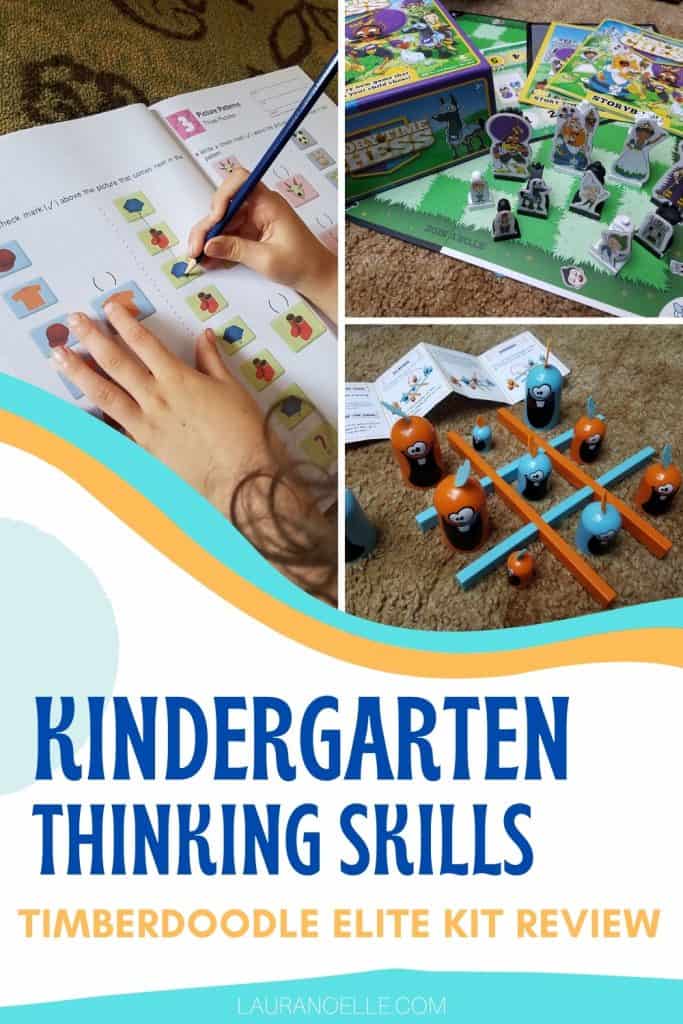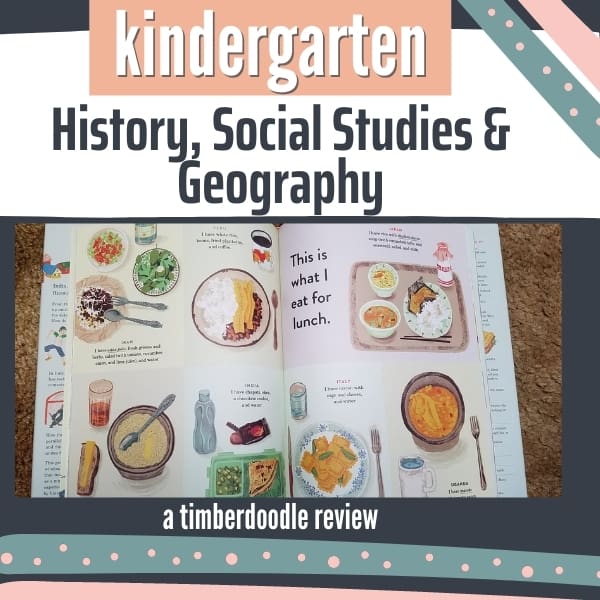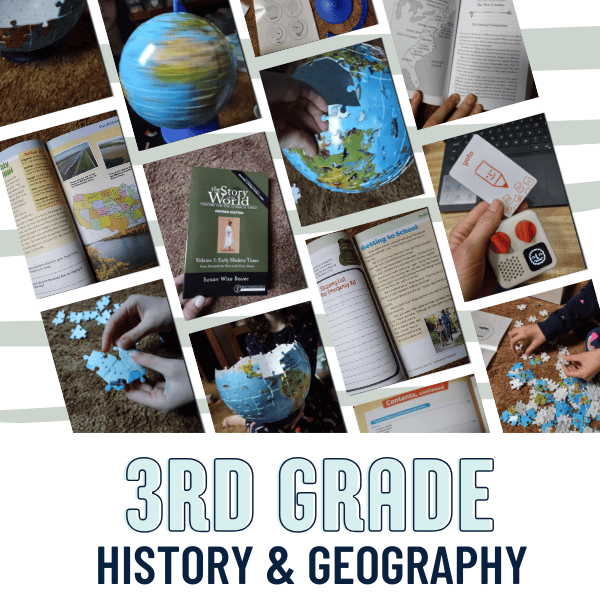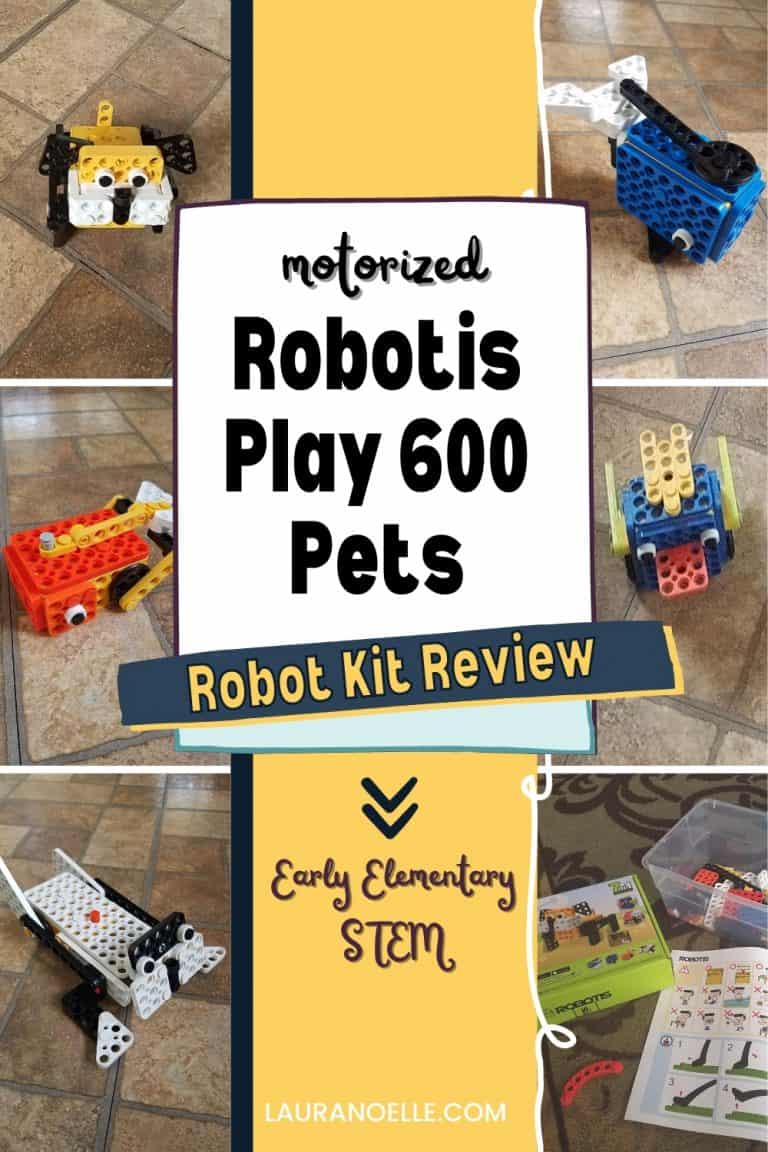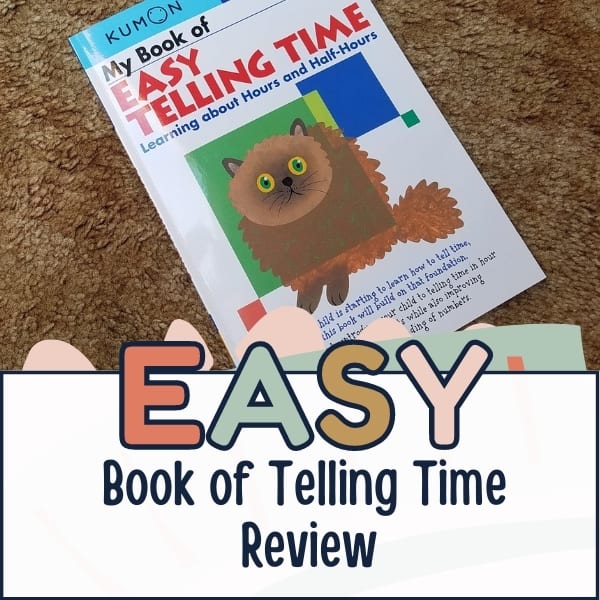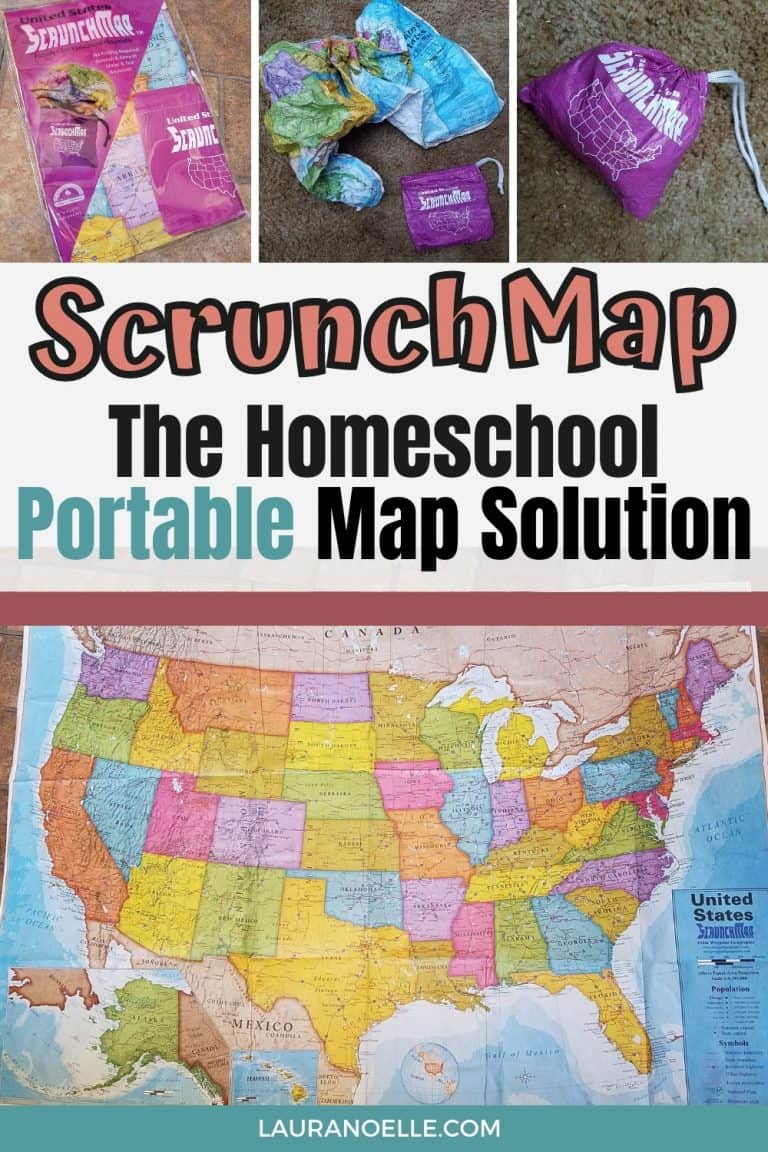Thinking Skills for Kindergarten || Timberdoodle Elite Kit Review
This post may contain affiliate links, which means I may receive compensation if you make a purchase using one of these links.
Building strong minds takes practice, and Timberdoodle is known for putting the best tools together in their skill-focused education kits. Here’s what we thought of the Kindergarten Thinking Skills materials.
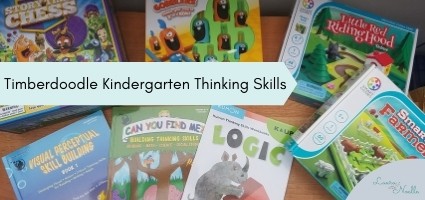
Thinking Skills is truly one of my very favorite parts of Timberdoodle kits. The games we received from the Preschool and Pre-K curriculum kits are still beloved elements of play and learning in our house and likely will be for years to come as many of the games are designed for age ranges such as 3-7 years old. Most games build skill levels and grow with the child (isn’t that what every parent wants to hear!).
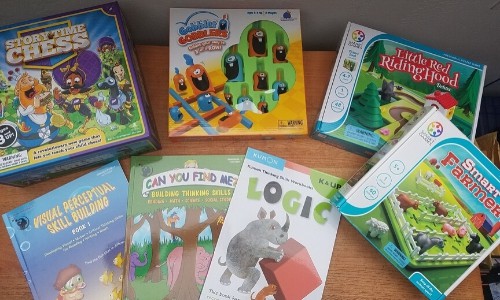
Timberdoodle’s Kindergarten Elite kit (you can see the whole kit here) has 7 thinking skills elements. Four games and three workbooks are included.
- Visual Perceptual Skill Building 1
- Can You Find Me? Kindergarten
- Kumon Kindergarten Logic
- Smart Farmer (see our past review here)
- Gobblet Gobblers
- Story Time Chess
- Little Red Riding Hood
A special thanks to Timberdoodle Company for sponsoring this homeschool series of posts by graciously sending us this complimentary curriculum kit to see what we think. All opinions are our own!
Visual Perceptual Skill Building 1
The Timberdoodle K Handbook suggests completing
5-6 pages of this book each week.
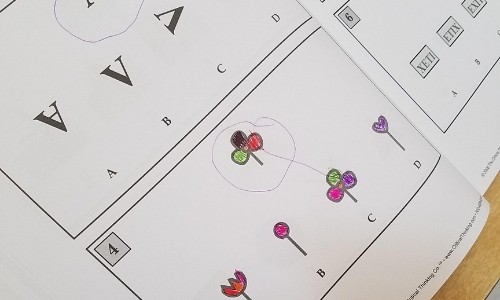
In my unboxing video, I shared that I wasn’t very excited about the look of Visual Perceptual Skill Building Book 1. It’s completely black and white and 185 pages of shapes and letters drawn in boxes. At first glance, it looks like it would completely bore a child.
However, I must say I was pleasantly surprised by my daughter’s reaction to this book. It begins with mazes, which she happens to really enjoy, followed by visual discrimination matching. While I assumed the black and white would be unappealing to her, it actually turned out that she was excited to color the objects in herself.
The book continues on to cover subjects like visual closure, figure ground, form constancy, memory, sequential memory, and spatial relationships. I think it’s important to remember that this workbook is indicated for use for Pre-K to 1st grade. It starts on the easier side and progresses to more difficult activities. While my daughter at age 5 has done well in the first 1/4 of the book, as I flip to the back, I know it will take some time before she’s ready for those.
One small frustration I have with this workbook is that while it provides a “pretest” page and “posttest” page for each topic, for some reason they have the book formatted to have both tests back to back at the start of each topic, instead of the pretest at the beginning, followed by the work pages, and ending with the posttest. While some children are fine with skipping pages that are “in order”, some children struggle with this. My daughter for one refused to skip over the posttest. To avoid this, I would have had to rip out all pages and given them to her in a specific order, which is far too much work!
You can find Visual Perceptual Skill Building 1 here.
Can You Find Me? Kindergarten
The Timberdoodle K Handbook suggests completing
3+ puzzles of this book each week.
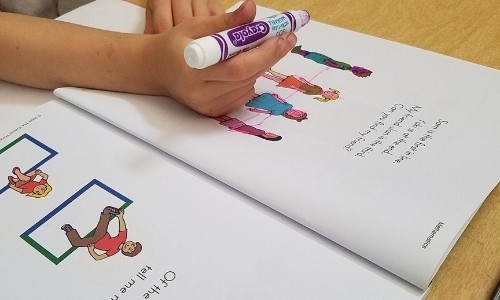
We were already familiar with the “Can You Find Me” puzzles as simpler versions are a part of Building Thinking Skills. Can You Find Me puzzles are short rhymes, followed by colorful images where the child uses critical thinking and problem-solving skills to solve the riddle and pick the correct answer.
The K-1 book features 100 riddles covering the subjects of reading, math, science and social studies. Little brains are challenged with shapes, colors, objects, animals, weather, faces and parts of the body, letters, sounds, numbers and more.
My daughter loves the rhymes and though she doesn’t always take the time to think through the problem before guessing the answer, as we work on the problems together, I gently guide her to think carefully and critically by repeating the phrases and asking questions about the images provided.
For those concerned with meeting state and national standards, these puzzles are created to help children recognize sequences, classify objects, identify similarities and differences, and interpret analogies. Students can simply point and verbally discuss the answers, or they may draw lines and color as my daughter prefers. If your child doesn’t mark in the book, it can be easily re-used in the future for other children. (I tried to encourage my daughter to just point, but that wasn’t good enough for her–oh well!).
You can find Can You Find Me? Kindergarten here.
Kumon Kindergarten Logic
The Timberdoodle K Handbook suggests completing
2 pages of this book each week.
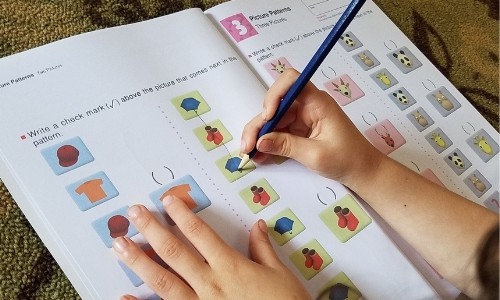
Several years ago the Pre-K kit came with a lovely set of Kumon thinking skills workbooks and my daughter absolutely ate those up. Kindergarten Logic does not disappoint!
Colorful and visually dynamic, the topics include picture patterns, mazes, real or pretend, patterns with rotating blocks, pattern puzzles, and color and shape patterns. Each topic has multiple levels of difficulty that walks the student from a simple to more complex exercise.
The pages within each topic can feel repetitive, so I think it’s important to help your student stick with 1 or 2 pages at a time. Sometimes my daughter gets over-ambitious and wants to keep going, only to burn herself out on a particular type of puzzle or activity. The expectation of 2 pages a week during the school year keeps the material fresh.
You can find Kumon Kindergarten Logic here.
Smart Farmer
The Timberdoodle K Handbook suggests completing
2 challenges each week.
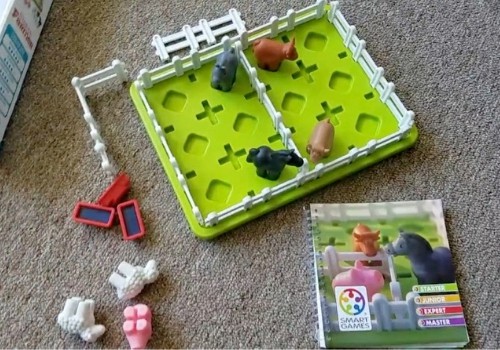
You can find a detailed review we did last year on Smart Farmer here. This SmartGame is designed for ages 5+. Focusing on the more challenging aspects of spatial insight, concentration, planning, and flexible thinking, this little farmyard makes children stretch their skills beyond what they think “should” work right away.
With 60 challenges building from “easy” to “expert”, students are slowly learning and understanding how to identify picture problems and then use their hands to test out various outcomes until they find a solution that works.
My daughter has been able to eventually figure out a few of the easy challenges, sometimes with a little guidance, but most of the challenges are beyond her ability at this point, and I look forward to using this game for years to come!
You can find Smart Farmer here.
Gobblet Gobblers
The Timberdoodle K Handbook suggests playing this
game once a week.
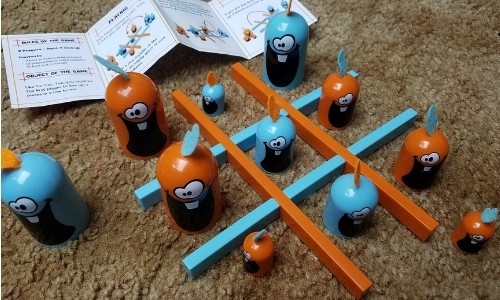
When we opened our Kindergarten Kit box, Gobblet Gobblers was the first thing that snagged my daughter’s attention. She wanted to play immediately! (And we did!)
This 2 player game is perfect for siblings, friends, or a child and parent to play together. It’s fun, silly, and never predictable twist on tic-tac-toe that all ages can enjoy.
Challenging players with visual perception, memory, problem-solving, and focus, Gobblet Gobblers is a quick game with an educational punch. The twist is that the different sized “gobblers” can “gobble” up smaller pieces, and your memory is tested as you must remember who is under bigger pieces or you might just let your opponent win!
My daughter loves the silly and adorable gobbler pieces and playing again and again doesn’t get old. It’s an excellent way to incorporate laughter and connection into the school day.
You can find Gobblet Gobblers here.
Story Time Chess
The Timberdoodle K Handbook suggests playing
this game 1-2 times a week.
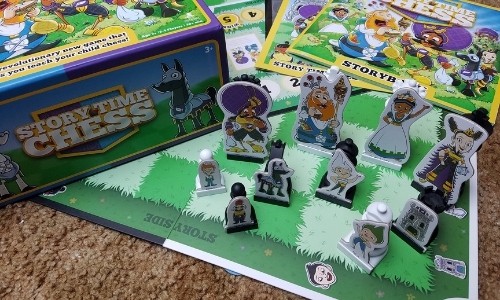
Story Time Chess is quite a game, recommended for ages 3+ and for 2-4 players. And don’t be fooled by the cute factor–this game is designed to teach young children how to play the real game of chess!
The box itself is hefty (I was surprised by that!) and full of small pieces, so you’ll want to supervise the use of the game and make sure the pieces don’t escape from the box.
Chess is a game that sharpens critical thinking, increases IQ, and strengthens academic performance. Personally, I have never played chess or had any interest in learning, so my daughter and I are learning together! I’ll admit the process would probably be smoother if I knew something about the game, but even if you don’t, the step by step instructions and stories are enough!
Included is a story book that explains each chess piece as a “character” with a story and purpose. The story relates to how the piece is designed to move, and practice exercises are included after each story to help children (and adults) grasp the concepts.
Once the story book and practice exercises are mastered, you move on to play the Crown Card game, which encourages players to use their new knowledge of the pieces on the board in a fun interactive way. The game board is two-sided, with a story themed side and a standard game side. There are detailed instruction books included for playing both the story theme and standard chess games.
This game is weighty and my daughter initially was frustrated because she wanted to play a “game” and this is a little different. Reading a story and moving a game piece a few times wasn’t what she expected. My own confusion as I tried to read through all the materials didn’t help her enthusiasm either. My advice — open and read through the booklets before you sit down to start with your kiddos!
We’ve read most of the stories and done some of the exercises, but haven’t gotten much further. If you have older children, I think younger students would be more eager to pay attention and keep trying, but my daughter’s short attention span hasn’t led to her grasping all the concepts yet. I anticipate that we will continue over the next few years, taking in small chunks of information and trying to keep it fresh. I absolutely love the concept of teaching young children chess, and I think they have set it up well, but the student still has to be willing to sit down and learn!
You can find Story Time Chess here.
Little Red Riding Hood
The Timberdoodle K Handbook suggests completing
2 challenges each week.
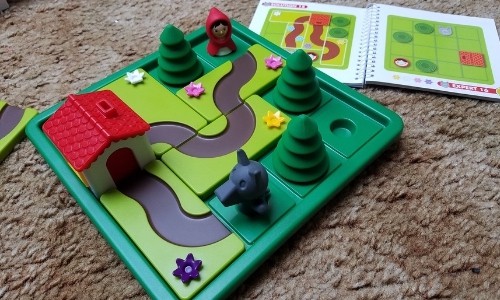
Little Red Riding Hood has been a beloved game in our closet for the past year. Recommended for ages 4-7, the 48 challenges stimulate spatial logic, planning, problem-solving, concentration, and visual perception.
The challenge booklet is two-sided. One half is 24 puzzles with Red Riding Hood alone, and the other half is 24 puzzles with both Red and the wolf. Each set of puzzles begins with starter level and progresses to master.
The puzzles with Red alone create one path, while Red and the wolf create two paths. At first, my daughter was stumped, but she quickly caught on, especially when she discovered that the puzzle book holds a hint on each page (corresponding flower colors hint to what pieces are used in the solution, but don’t give away the order the pathway pieces line up together).
While we love all our SmartGames, Red Riding Hood is the most asked for right now, most likely because it meets her skill level perfectly, and offers a challenging experience as well.
You can find Little Red Riding Hood here.
Final Thoughts on Kindergarten Thinking Skills
I love that Timberdoodle puts together an eclectic package of materials for each academic subject. While the workbooks tend to be fairly skill level specific, most of the games begin with simple challenges and move to difficult levels. This makes them grow with your child and also offers confirmation that the student is learning and mastering new skills.
For our family, these materials will last through this TK (Transitional Kindergarten) school and into next year (Kindergarten) with plenty of learning materials.
Related Articles on Homeschooling
- Timberdoodle Kindergarten Elite Curriculum Kit Overview (2020-2021 Homeschool Year)
- Chicken Shuffle Jr. SmartGame Review
- Engaging Problem Solving with Games || Lion in My Way Review
Want to save Thinking Skills for Kindergarten || Timberdoodle Elite Kit Review for later? Pin to your favorite Pinterest Board here!
